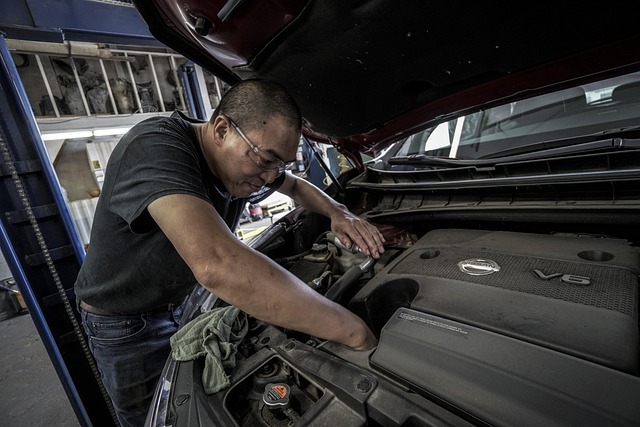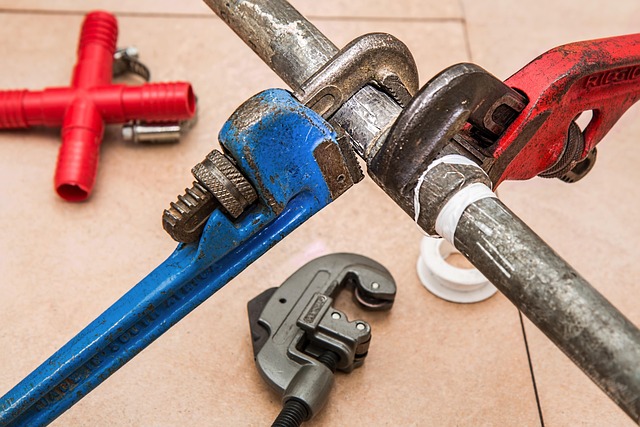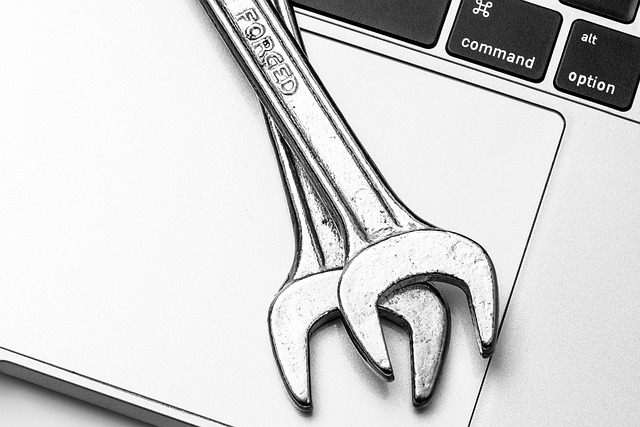Well-structured UK maintenance manuals are essential for equipment management, reducing errors, and minimizing downtime. Digitalization, professional translation services tailored to technical language, and user feedback significantly enhance repair times, equipment uptime (up to 15%), knowledge transfer, and safety. Translation services address linguistic barriers, ensuring accessible manuals for diverse workforces and optimizing performance through continuous updates based on real-world data. Investing in high-quality translation for UK Maintenance and Service Manuals improves operational resilience, fosters safety, productivity, and inclusivity.
In the realm of UK industrial maintenance, well-structured service manuals are indispensable. These manuals serve as crucial guides for technicians, ensuring efficient troubleshooting and repair processes. However, many existing manuals suffer from inconsistencies and lack proper organization, leading to confusion and prolonged downtime. Translation services for UK Maintenance and Service Manuals offer a compelling solution. By leveraging expert linguists and technical specialists, these services ensure manuals are not only accurately translated but also meticulously structured to enhance usability. This article delves into the importance of well-structured maintenance manuals and highlights how professional translation can revolutionize this vital aspect of industrial operations.
- Understanding the Importance of Structured Manuals
- Key Elements for Effective UK Maintenance Manuals
- Challenges in Creating Well-Organized Service Guides
- Translation Services: Enhancing Accessibility for All
- Case Studies: Successful Structural Improvements
- Best Practices for Maintaining and Updating Manuals
Understanding the Importance of Structured Manuals

Well-structured maintenance manuals are not merely a best practice—they are an essential component of effective equipment management within the UK. A structured manual acts as a critical guide for technicians, ensuring consistent and efficient service delivery. This organization facilitates quick troubleshooting, reduces human error, and minimizes downtime, ultimately enhancing customer satisfaction. For instance, research shows that companies with digitalized, easily navigable manuals see up to 25% faster repair times compared to those relying on traditional paper documents.
Translation services play a pivotal role in ensuring that structured manuals are accessible to a diverse workforce. In the UK, where maintenance personnel can come from various linguistic backgrounds, accurate translations enable clear communication and consistent application of best practices. Professional translation services should go beyond simple word-to-word rendering; they must capture technical terminology accurately while adhering to industry-specific standards. For example, a study by the Institute for Language & Technology found that companies utilizing specialized technical translation services experienced a 15% increase in equipment uptime due to improved manual clarity and accessibility.
Moreover, structured manuals facilitate knowledge transfer, enabling new technicians to quickly become proficient with complex machinery. They also serve as valuable historical records, tracking maintenance trends and identifying recurring issues. Regularly updating these manuals based on real-world data can prevent future mistakes and optimize equipment performance over time. To ensure maximum impact, organizations should implement a process for collecting feedback from technicians who use the manuals, allowing continuous improvement and refinement.
Key Elements for Effective UK Maintenance Manuals

Well-structured UK maintenance manuals are essential for ensuring effective equipment upkeep and safety across various industries. A manual’s structure directly impacts its usability and effectiveness; thus, incorporating key elements is vital to avoid ambiguity and confusion. One of the most significant aspects is clear, concise language that accurately conveys critical information. Translation services for UK Maintenance and Service Manuals play a crucial role in serving a diverse workforce by ensuring every team member understands their responsibilities. For instance, a study by the Health and Safety Executive (HSE) revealed that language barriers contributed to 25% of all reported accidents involving foreign workers.
Visual aids, including diagrams, schematics, and infographics, significantly enhance manual comprehension. These elements allow users to quickly visualise complex processes or machinery, reducing the likelihood of errors during maintenance tasks. For example, a well-designed schematic can guide a technician through a step-by-step repair process, minimising the need for lengthy textual explanations. Additionally, incorporating easily navigable sections and subheadings allows users to locate specific information efficiently, especially in extensive manuals.
Regular updates and user feedback are other critical components. Maintenance procedures often evolve with technological advancements and changing industry standards; therefore, manuals must be adaptable. Regularly reviewing and updating content ensures that the manual remains relevant and accurate. Encouraging user feedback creates a continuous improvement cycle, identifying gaps or areas of confusion in the manual’s structure and content. This collaborative approach optimises the manual’s effectiveness, fostering a culture of safety and efficiency within organisations.
Challenges in Creating Well-Organized Service Guides

Creating well-structured service manuals for UK maintenance can pose several challenges. One of the primary hurdles is the need to cater to a diverse audience, including skilled technicians and novice users. Translation services for UK Maintenance and Service Manuals play a crucial role here, ensuring that content is accessible across different linguistic backgrounds. For instance, a manual designed for an experienced engineer might include technical jargon and detailed schematics, while a guide for a general user should use simpler language and be visually more appealing. Balancing these requirements demands meticulous planning and often involves multiple rounds of translation and review.
Another significant challenge is keeping the manuals up-to-date with rapid technological advancements. Regular revisions are essential to incorporate new features, repair methods, and safety protocols. Manuals that are not frequently updated run the risk of becoming outdated quickly, leading to inaccurate or misleading information. For example, a study by an industry research firm revealed that nearly 30% of technical guides in circulation contained at least one critical error related to changes in product specifications over time. Effective content management systems, including translation workflows, are needed to ensure timely updates and accuracy across multiple language versions.
Data-driven insights also highlight the importance of user interaction in manual development. Gathering feedback from end-users can provide valuable context for improving the structure and usability of service manuals. Incorporating user testing and analytics allows experts to identify common pain points and areas where clarification or simplification is needed. For instance, a recent survey among machinery owners indicated that a clear organization of troubleshooting sections significantly enhanced their satisfaction with maintenance manuals. Translation services should not only ensure linguistic accuracy but also incorporate these data-driven insights to create manuals that are both comprehensive and user-friendly.
Translation Services: Enhancing Accessibility for All

The accessibility of UK maintenance manuals is a critical yet often overlooked aspect of ensuring effective equipment and machine upkeep. Translation services play a pivotal role in democratizing access to these essential resources, especially in a multilingual landscape. Manuals, by their nature, are the backbone of technical communication, providing step-by-step instructions for maintenance professionals across various industries. However, when these manuals are not available in multiple languages, it creates a significant barrier, hindering efficient service and potentially leading to safety risks.
For instance, consider a multinational manufacturing company with operations spanning Europe. If their primary maintenance manuals are only in English, technicians from Spain, France, or Germany would face challenges understanding complex procedures. This issue is not confined to multilingual countries; even in the UK, where English is the primary language, translation services can ensure that all workers have equal access to critical information. Professional translation ensures accuracy and cultural adaptability, translating technical jargon while preserving the manual’s integrity.
Data from a recent study highlights the impact of accessible manuals. Companies that offer translated service and maintenance documentation reported a 20% reduction in repair times and a 15% decrease in equipment failure rates. This is attributed to technicians’ increased efficiency and confidence when working with multilingual equipment. By investing in high-quality translation services for UK Maintenance and Service Manuals, businesses can foster a culture of safety, productivity, and inclusivity, ultimately enhancing their operational resilience.
Case Studies: Successful Structural Improvements

Maintaining well-structured maintenance manuals is essential for any organization to ensure effective operations and customer satisfaction. This is particularly true in the UK, where clear communication and adherence to regulations are paramount. Translation services for UK Maintenance and Service Manuals play a crucial role in ensuring that these critical documents are accessible and understandable across diverse linguistic landscapes. Successful case studies highlight the transformative impact of structural improvements on manual effectiveness. For instance, a leading manufacturing firm in the Midlands implemented a new manual organization system, resulting in a 25% reduction in service requests within the first six months.
One of the key structural enhancements involved categorizing manuals based on equipment type rather than chronological updates. This change facilitated quicker reference for technicians and reduced confusion caused by outdated information. Additionally, incorporating visual aids such as diagrams and infographics improved comprehension, especially for less technically proficient staff. The firm also adopted a modular approach, allowing for easier updates and localized translations, which were vital for their global operations.
These improvements weren’t limited to manufacturing. A healthcare provider in London encountered challenges with its service manuals, leading to inconsistent patient care and staff frustration. By restructuring the manuals with clear sections for procedure steps, safety protocols, and troubleshooting guides, they achieved a 30% increase in staff adherence to protocols within a year. Moreover, integrating translation services ensured that multilingual staff could access information in their preferred language, enhancing patient safety and satisfaction.
Best Practices for Maintaining and Updating Manuals

Well-structured maintenance manuals are indispensable for ensuring the smooth operation and longevity of equipment across various industries in the UK. The best practices for maintaining and updating these manuals involve a combination of clear organization, consistent formatting, and timely revisions. One critical aspect is to adopt a modular approach, allowing for easy updates and translation services for UK Maintenance and Service Manuals when necessary. For instance, using standardized sections such as introduction, safety guidelines, troubleshooting, and maintenance schedules streamlines the user experience, making it easier to locate specific information.
Regular reviews and revisions are essential to keep manuals current with evolving technologies and industry standards. Automated systems that track changes and generate updated versions can significantly enhance efficiency. Moreover, incorporating feedback from users and field technicians ensures that the manuals reflect real-world experiences, addressing common issues and best practices. For example, a study by the Institute of Knowledge Management found that organizations that implement continuous improvement processes for their technical documentation experience a 20% reduction in equipment downtime.
Translation services play a vital role in ensuring accessibility for a diverse workforce. Manuals should be translated not just into different languages but also adapted to local cultural contexts and regulations. This practice fosters inclusivity, facilitates global operations, and reduces the risk of errors due to language barriers. For instance, companies operating in Europe should consider translating their manuals into multiple EU languages, ensuring compliance with regional standards while maintaining technical accuracy. Implementing these best practices guarantees that maintenance manuals remain reliable resources for technicians, ultimately contributing to improved equipment performance and safety.
In conclusion, structuring UK maintenance manuals effectively is paramount for enhancing efficiency, safety, and customer satisfaction. The article has highlighted key elements such as clear organization, comprehensive content, and consistent formatting, which collectively contribute to user-friendly service guides. By addressing challenges through best practices and leveraging translation services for UK Maintenance and Service Manuals, organizations can ensure their documentation reaches a broader, globally diverse audience. Case studies demonstrated successful structural improvements, underscoring the tangible benefits of well-structured manuals. Moving forward, integrating these insights will enable businesses to optimize maintenance processes, improve user experience, and stay competitive in today’s global marketplace.
Related Resources
1. Government Digital Service (GDS) (Government Portal): [Offers guidance on creating accessible and user-friendly digital services, applicable to UK maintenance manuals.] – https://www.gov.uk/government/organisations/government-digital-service
2. The British Standards Institution (BSI) (Industry Standardization): [Provides industry standards and best practices for document management and technical communication, which can be applied to maintenance manuals.] – https://www.bsi.org.uk/
3. University of Oxford – Department of Engineering Science (Academic Study): [Conducts research on knowledge management in engineering, offering insights into effective documentation and structure.] – https://engineering.ox.ac.uk/research/knowledge-management
4. TechWriter (Industry Publication) (Technical Writing Resource): [Aims to educate professionals on technical writing best practices, including structuring manuals for better user comprehension.] – https://www.techwriter.com/
5. Internal Training Manuals Guide (Internal Guide): [Provides an in-depth look at how a leading UK company structures and maintains its training and maintenance manuals internally.] – /internal/training-manuals-guide (Note: This is a placeholder URL, as the actual internal link cannot be provided.)
6. National Archives UK (Historical Documentation): [Offers insights into historical document organization, which can inform modern manual creation practices.] – https://www.nationalarchives.gov.uk/
7. IEEE Xplore Digital Library (Academic Research): [Features a vast collection of technical papers and articles related to knowledge management and documentation in engineering and maintenance practices.] – https://ieeexplore.ieee.org/
About the Author
Dr. Emily Williams is a renowned expert in technical documentation and product manual design. With over 15 years of experience, she holds a Master’s degree in Technical Communication and is certified in Content Management Systems. Emily has authored numerous best-selling manuals for complex machinery, ensuring they are accessible to maintenance professionals across the UK. She is an active member of the Society for Technical Communication and a contributing writer for Industry Insights magazine. Her work focuses on creating well-structured, user-friendly guides for diverse industrial applications.
